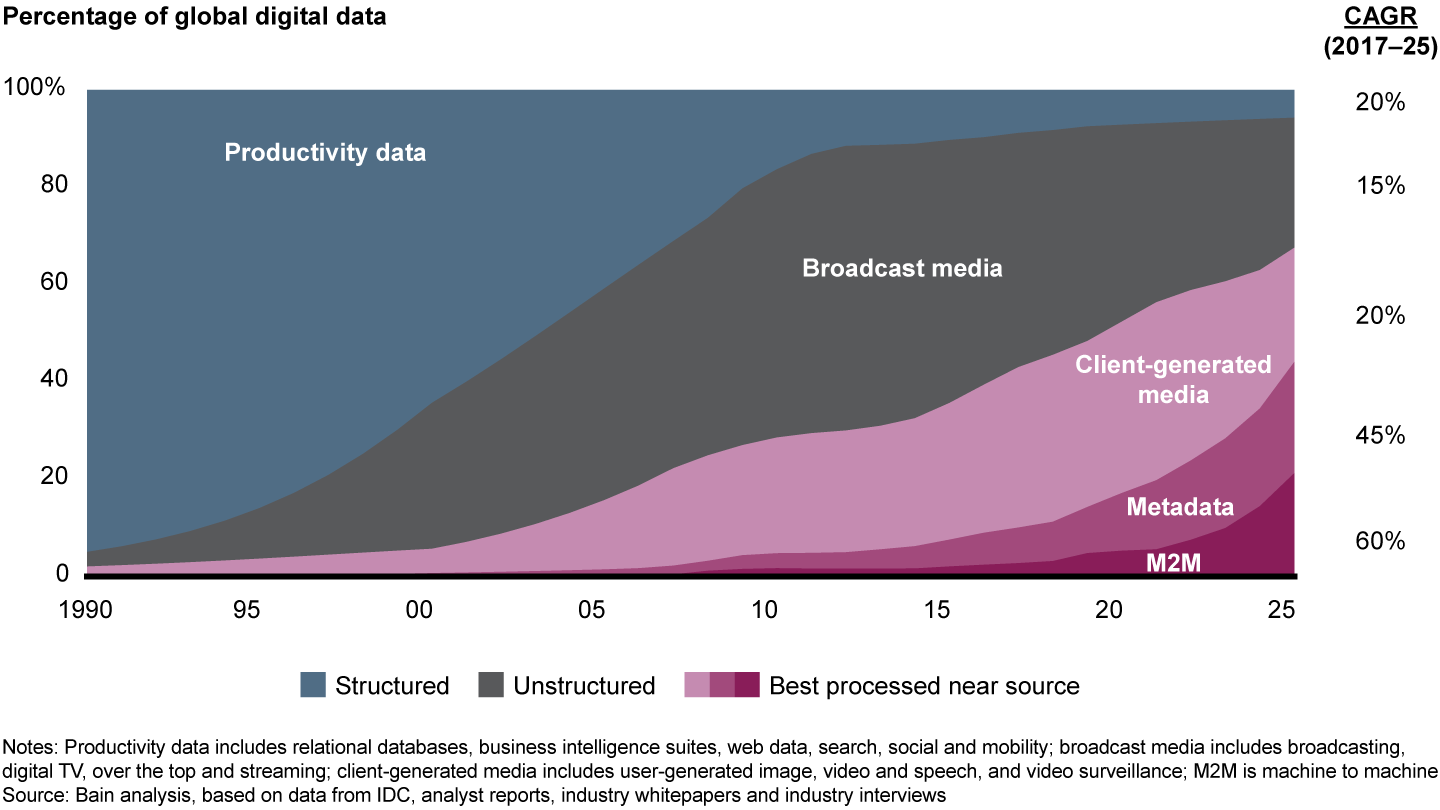Report

This article is Chapter 4 of Bain’s global Technology Report 2020. Explore the contents of the report here or download the PDF to read the full report.
With value creation shifting along the lines described in the previous section, general managers of technology businesses need to match evolving customer needs with their competitive strengths and the competencies of their organizations. It can be hard, however, for managers to find sound coverage of market transitions that provides predictive headlights extending past the next two or three quarters. Our goal in this competitive battlegrounds section is to bring important transitions to light in a way that provides medium-term insights. We focus on prime-mover technology trends and the investment patterns of leading contenders that have long-term predictive value. This “battleground” approach provides insight that can be more easily adapted to a company’s specific situation.
In the past, we’ve sometimes focused on Moore’s Law as the industry’s prime mover. But in recent years, this phenomenon of dramatic growth in computer processing power has slowed and grown more expensive.
Today, data takes the top spot. Its exponential growth and evolving mix predict sweeping changes to IT architecture and business dynamics (see Figure 1). The rate of data growth is almost unfathomable: IDC estimates the amount of data created over the next three years will be greater than the data created over the past three decades.


The nature of data is as important as the quantity. The fastest-growing areas today are user-generated media and metadata. This data is often unstructured and latency-sensitive. Companies are making significant changes to the architecture of networks and data centers to accommodate this shift. Specifically, the hyperscale data center is starting to blend with the network as computing capabilities become embedded throughout, extending all the way to connected devices at the network’s edge. As a result, Microsoft, Amazon, Google and other technology companies show no signs of slowing their massive investments in edge computing, hybrid cloud technologies and the Internet of Things. Meanwhile, more and more companies will turn to artificial intelligence and other advanced analytics technologies in order to manage—and, more important, capture value from—the extraordinary loads of unstructured data.
We expect these areas—data analytics, cloud and edge computing, and the IoT—to be the fiercest competitive battlegrounds in technology over the next year and beyond.
The last competitive battleground that will define the sector for the foreseeable future is not technological, but geopolitical: China. The country is a critical market for global technology companies, and the Chinese technology sector is a rising star. But the trade war and other tensions with the US and other countries have created enormous uncertainty for technology companies and China’s position in the industry.
Technology executives that get a handle on these emerging battlegrounds will have a better shot at guiding their companies through the transitions underway.